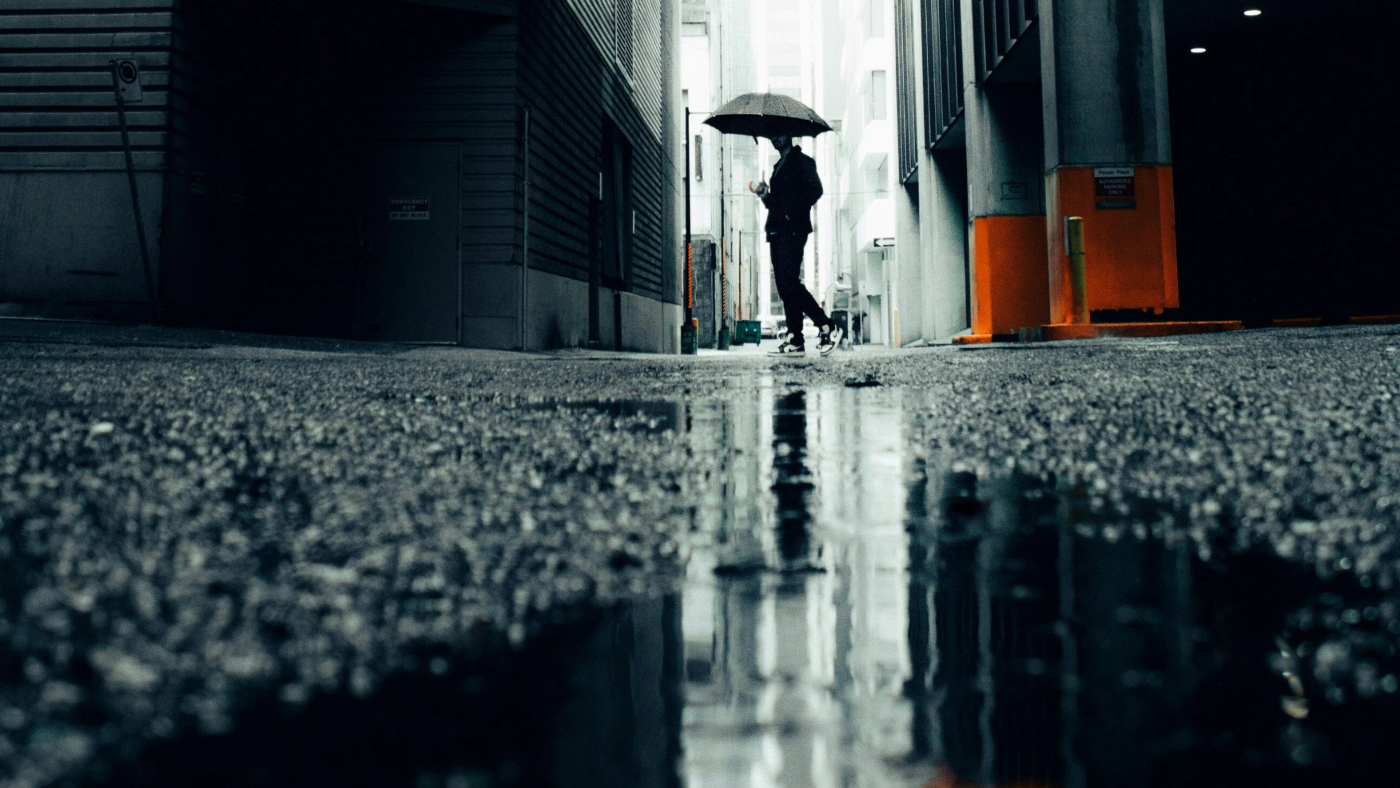
Urban pollution is killing salmon and hurting local waters. Who is responsible?
As a kid, I grew up in Čeqʷəŋín ʔéʔləŋ (Oak Bay), a short fifteen-minute walk from one of the few stretches of Thaywun (Bowker Creek) that still flows above ground near a busy intersection in Greater Victoria. But it wasn’t until I moved back to Lekwungen territory in my late twenties that I learned the creek was once home to many species of fish, including coho and chum salmon.
I found it hard to believe. Ducks, yes – but fish? In all the lazy summer days I spent playing in the shade of willows beside the creek, I had never seen a fish.

Art by Charles Elliot Temoseng, located beneath a plaque on Fort St. that reads: “For thousands of years the salmon of Bowker Creek (Thaywun: coho salmon stream) supported thriving Indigenous populations. First peoples living in this region fished for salmon, herring and rockfish and collected a variety of shellfish and plant materials. They hunted deer and elk, and antlers were beautifully crafted into tools and works of art. The creek endures as a tribute to the traditions of the ancestors.”
The story of the Thaywun watershed is the story of so many watersheds in North America. Thaywun once flowed freely, but in the mid-1800s, predominantly white settlers began to ‘urbanize’ the creek. One of the consequences was a massive disruption to the natural processes of the water cycle.
Prior to colonization, most rainwater and snowmelt – i.e., ‘stormwater’ – would sink into the ground before gradually finding its way back to Thaywun and its many small tributaries. But as settlers buried more and more of the watershed beneath impermeable surfaces like streets, parking lots and roofs, they had to build networks of drains and pipes to capture this stormwater and send it back to the creek. Nowadays, 70% of Thaywun is underground, diverted through tunnels that “form the backbone of municipal stormwater drainage systems.”
Stormwater has become a huge threat to urban creeks and watersheds like Thaywun. Every time it rains, stormwater enters the creek. But before it does, it travels across roads and other impermeable surfaces, picking up cigarette butts, garbage, pesticides and any manner of toxic pollutants. The Friends of Bowker Creek Society, an environmental organization that works to restore the Thaywun watershed, explains on their website:
The pollutants in stormwater harm fish health, the sediments suffocate spawning gravels where salmon have laid their eggs, and the sheer volume of water can wash away fish eggs, erode stream banks, and destabilize the stream-side trees that provide critical shade for salmon. Groundwater levels fall, because the rain or snow that would normally replenish groundwater has been quickly piped away to the ocean. With insufficient groundwater supplies to last through summer, creek water levels fall dangerously low and water temperatures become dangerously high, threatening fish survival.
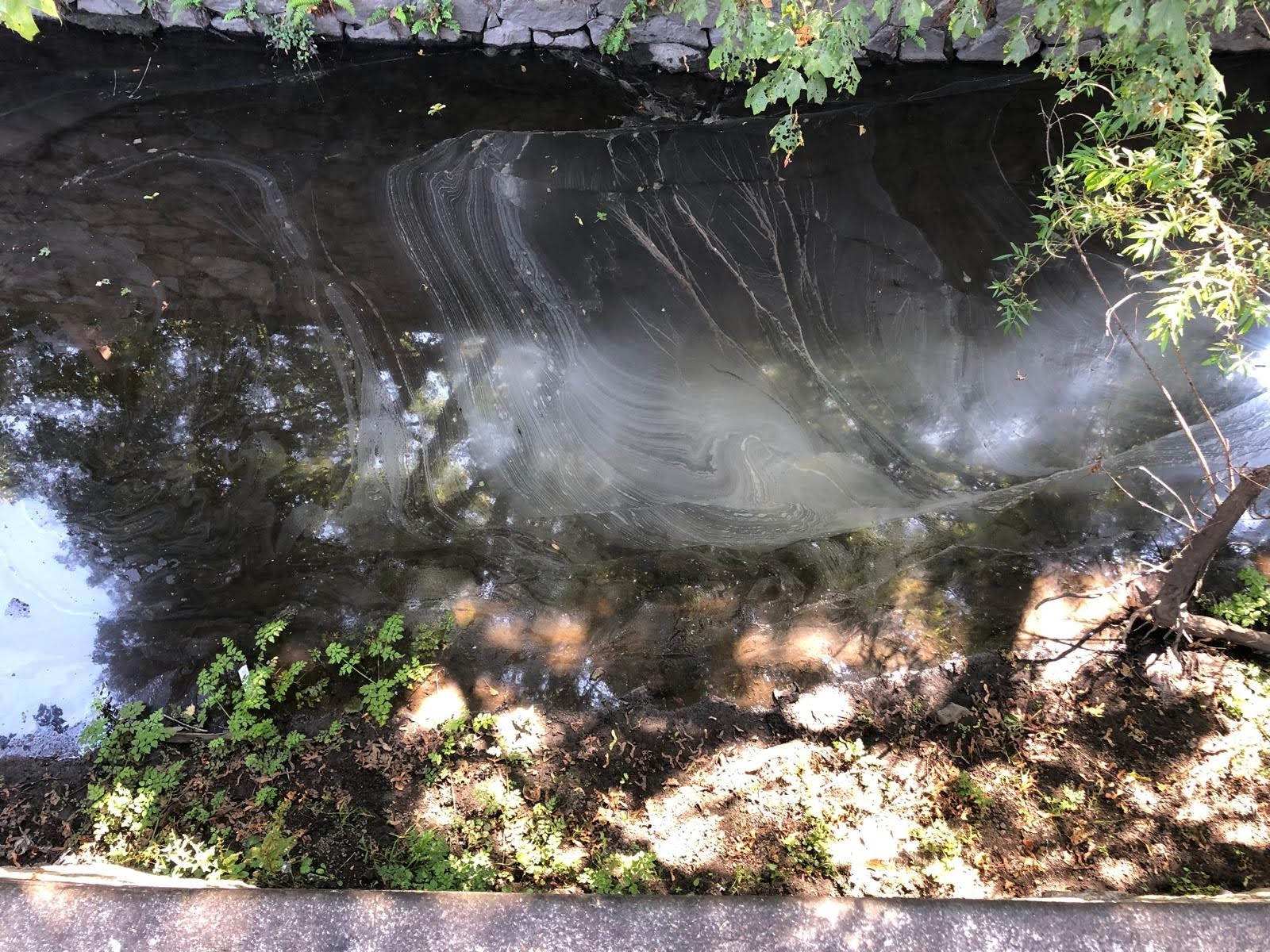
A sheen on the water of Thaywun near Fort St. and Foul Bay Rd.
Who is responsible for managing stormwater?
Given the serious harm that stormwater causes to fish and water, it seems like it would be an important consideration for planning and development in urban areas. So, under Canadian law, who is responsible for stormwater? The answer to this question is, it turns out, a slippery one.
In BC, the Local Government Act says that local governments are responsible for “drainage and sewerage.” Sewerage – which is just ‘sewage’ with an extra syllable – is waste (like faeces) from homes and commercial, institutional and industrial buildings that are connected to municipal sewer systems, and is more heavily regulated than stormwater. It is considered a form of “point-source” pollution, meaning that it enters water bodies (e.g., the Salish Sea) from a single, identifiable source (like the outfalls from wastewater treatment plants) and is relatively easier to manage. It is regulated under both the provincial Environmental Management Act and the federal Fisheries Act; the Fisheries Act regulations set minimum quality standards for sewage before it can be released into creeks, rivers, or oceans.
By contrast, the impacts of urban drainage, or stormwater, on water quality in streams and other waters is less directly regulated. Stormwater is not covered by the provincial Municipal Wastewater Regulation unless it gets mixed into wastewater. Local governments do have to evaluate pollution from urban drainage if they develop a Liquid Waste Management Plan (under the Environmental Management Act), but they have lots of latitude in terms of what they decide to do about it. There is no general legal requirement for local governments to monitor the quality of stormwater (although the Minister of the Environment and Climate Change Strategy may require it). Nor is there a requirement that Liquid Waste Management Plans or stormwater plans (often called Integrated Stormwater Management Plans) include specific, measurable watershed or ecosystem health goals.
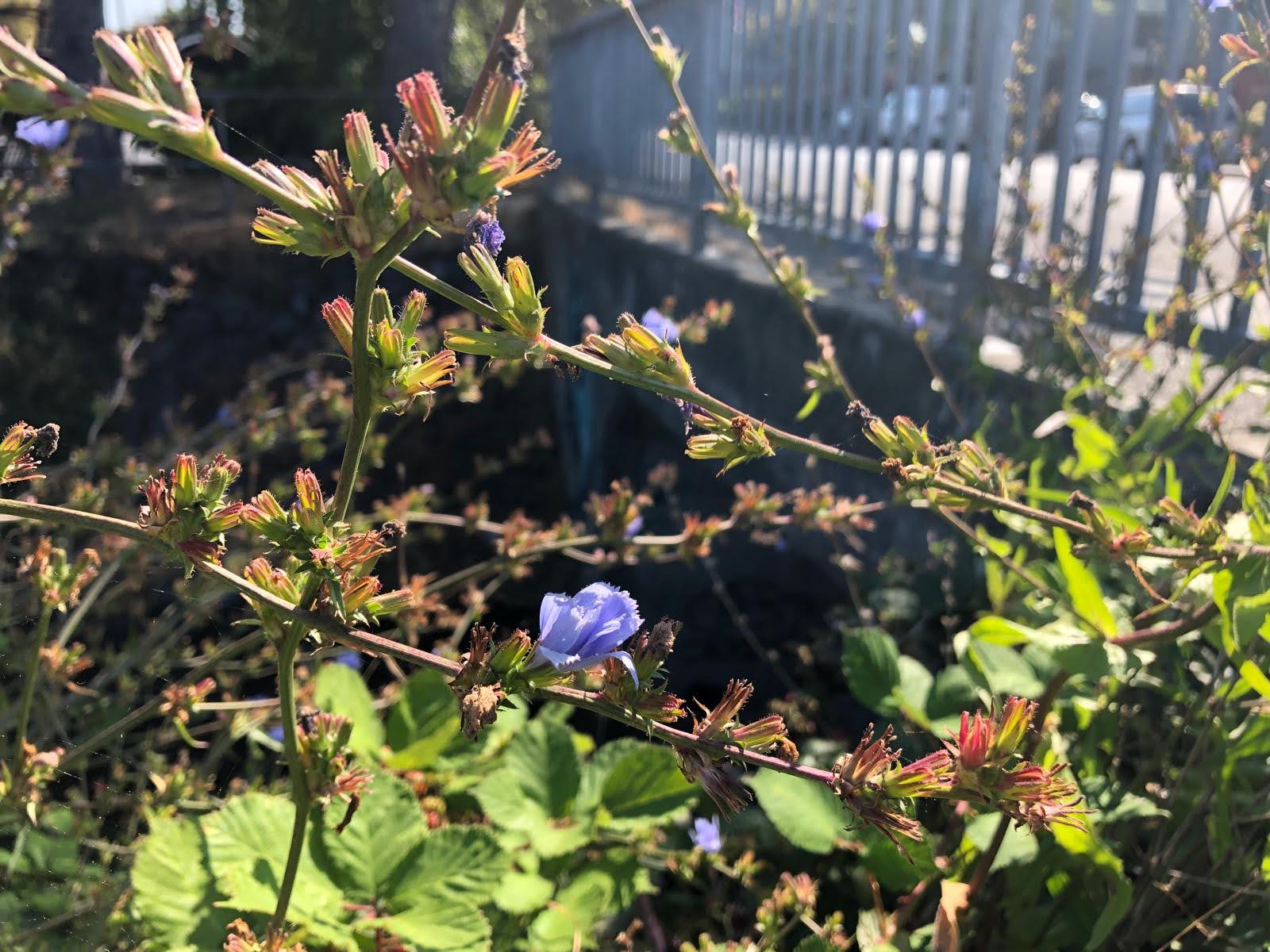
Chicory and Himalayan blackberry (both invasive species in Lekwungen territory) grow along the banks of Thaywun where it passes directly beneath a road.
It may seem intuitive to regulate sewage more heavily than stormwater. ‘Stormwater,’ after all, sounds natural. But polluted stormwater can be just as deadly to fish and other aquatic life as untreated sewage.
For example, 6PPD – a chemical in car tires – has been “linked to mass deaths of coho salmon when they pass through urban streams.” According to one scientific study, “[i]n most urbanized watersheds with extensive impervious surfaces, 40 to 90% of returning salmon may die [from exposure to 6PPD] before spawning.” 6PPD has been identified in waterways on southern Vancouver Island and the Lower Mainland.
The problem of 6PPD illustrates the larger conundrum here: stormwater exists in a kind of regulatory no-man’s land. Unlike untreated sewage, stormwater is not inherently a pollutant, but instead picks up and accumulates various kinds of “nonpoint-source” pollution – pollution coming from many different places all at once – as it flows over paved and impermeable surfaces. This makes it trickier to regulate than point-source pollution.
That isn’t to say that nobody is trying to do anything about it. Earlier this year, the federal government granted a request by environmental groups to consider listing 6PPD under the Canadian Environmental Protection Act (CEPA). If successful, listing under CEPA could mean that 6PPD is banned across the country – certainly, a positive step for fish. But 6PPD is only one of many chemicals that pollute stormwater, with new chemicals entering the marketplace all the time, much faster than they can be listed under CEPA. A piecemeal approach to regulating chemicals won’t save creeks or their fishy inhabitants.
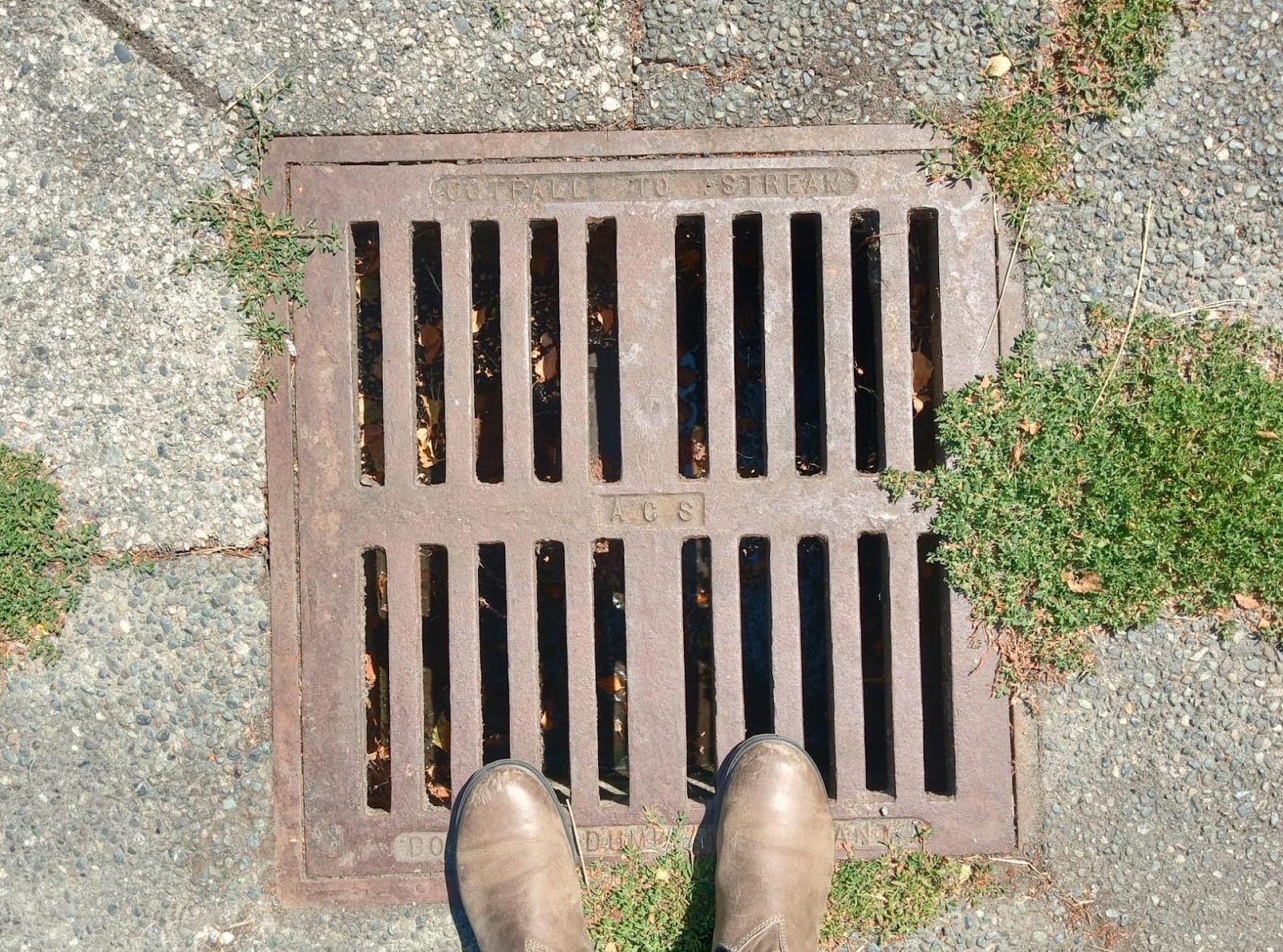
Standing on top of a stormwater drain in my neighbourhood. It says, in lettering that is difficult to make out, “outfall to stream.” Underneath my Blundstones, it says “do not dump pollutants.” Some communities have taken to marking storm drains with colourful fish symbols to remind community members where stormwater goes.
Then there are what are known in legal and fish circles as the “fish habitat and pollution prevention provisions” of the federal Fisheries Act. Section 35 prohibits “harmful alteration, disruption or destruction of fish habitat” (HADD). “Fish habitat” is broadly defined as “water frequented by fish and any other areas on which fish depend directly or indirectly to carry out their life processes…” Section 36 prohibits “the deposit of a deleterious substance” anywhere that it might eventually pollute water frequented by fish.
Many local governments and government agencies across the country, including the Greater Vancouver Sewerage and Drainage District (Metro Vancouver) and the Alberta Capital Wastewater Commission, have been prosecuted under section 36 for releasing untreated sewage into the environment. In those cases, the actus reus – the criminal act – could be traced back relatively easily to those local governments, who operate the source (wastewater treatment facilities) of the point-source pollution (sewage).
It would be more challenging (although presumably not impossible) to prove that local governments have committed a criminal act by allowing non-point-source pollution to be carried to fish-bearing streams through urban drainage systems.
So, in brief: local governments are responsible for “drainage” – the vector through which stormwater is transported to creeks and oceans – and the federal government is responsible for regulating chemicals and protecting fish and fish habitat. The Province also has jurisdiction to regulate stormwater and protect ecosystem health. But stormwater is still being polluted and, in turn, polluting waterways. Fish are still dying. Clearly, something needs to change.
Self-described “fish philosopher” Zoe Todd writes about how working with Inuvialuit community members in Paulatuuq taught her “to see fish as non-human persons who consciously and actively respond to the human and non-human worlds around them.” Walking along the banks of Thaywun yesterday, I thought about how over a century has passed since adult salmon last returned to this watershed. What would it take to welcome those salmon home? And what might a less anthropocentric approach to stormwater look like – one that views creeks and fish not as ‘resources,’ but as non-human persons?
As I paused to lean against one of the wooden posts along the creek and watch the ducks, I was suddenly struck by how green the land is. I could see red currant, Oregon grape, and snowberry. Hear the leaves of a willow shimmy in a hot summer breeze. I looked down and tried to imagine salmon swimming beneath me, lithe bodies meandering through the shallow water.
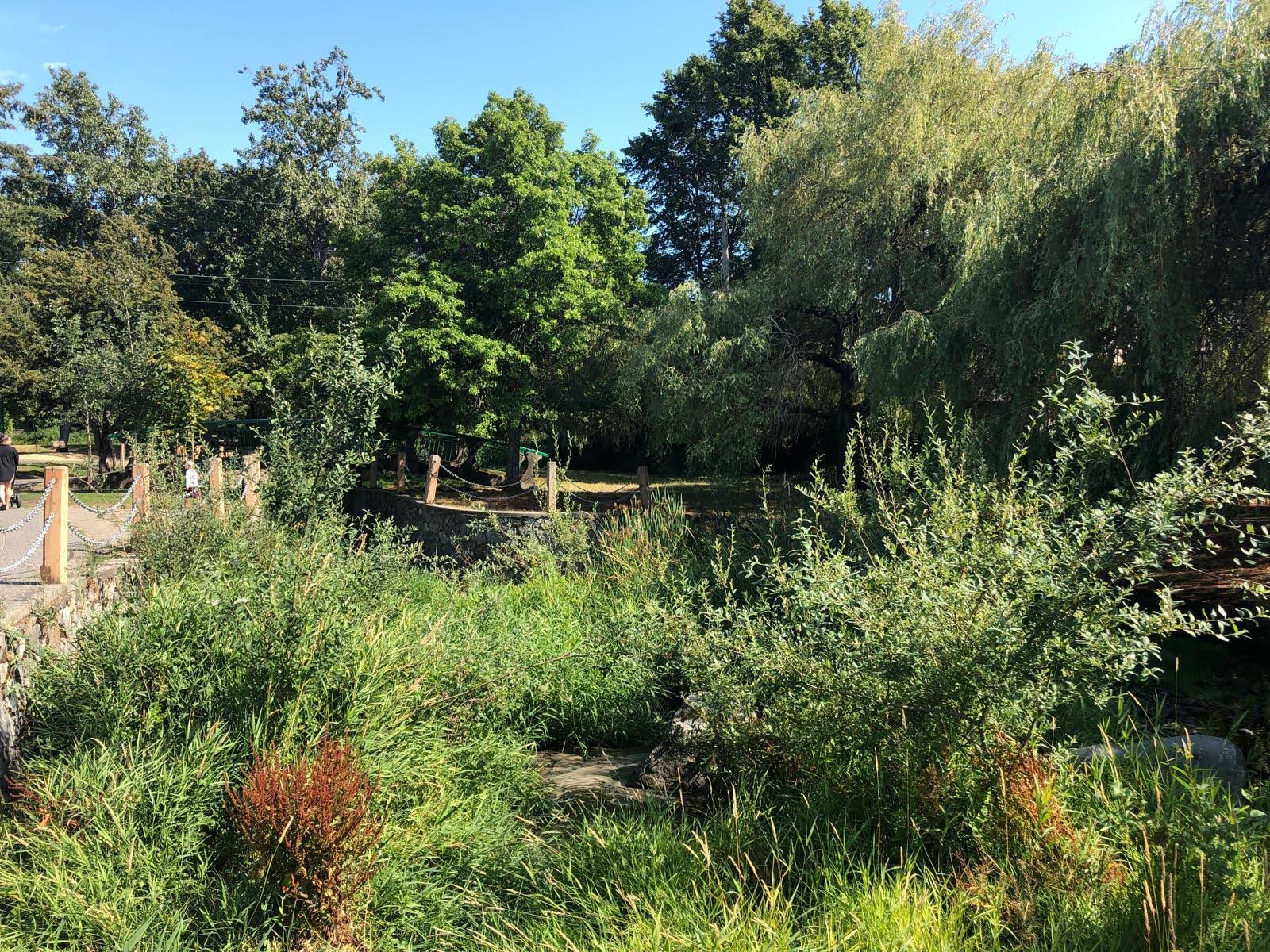
Local groups like the Friends of Bowker Creek have been undertaking habitat restoration at different parts of the Thaywun watershed.
In Part Two of this blog series, we look at some of the ways that communities and cities could make change happen when it comes to stormwater planning. How can communities develop and implement new approaches across the whole of a watershed? And how can we set realistic regulatory goals so that, even with limited resources, local governments can take action now?
When Rain Becomes Dangerous (a two-part series)
- Part 1: Who is responsible for the impacts of polluted stormwater?
- Part 2: How can we stop stormwater from harming fish?
Top photo: Chetan Kumar via Unsplash. Other images provided by Kai Fig Taddei.